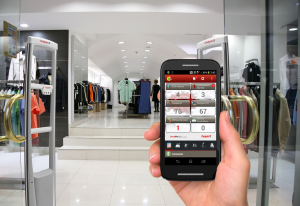 In today’s business climate it’s impossible for an owner or manager to have all the knowledge and experience needed to run a successful company. There’s too much new and changing information (i.e., technology, taxes, healthcare, government regulations, legal liability) for any one person to keep up, let alone have a working understanding.
In today’s business climate it’s impossible for an owner or manager to have all the knowledge and experience needed to run a successful company. There’s too much new and changing information (i.e., technology, taxes, healthcare, government regulations, legal liability) for any one person to keep up, let alone have a working understanding.
That’s why even very small businesses are using temporary specialists more often than ever before. Outside experts fill the many gaps which any business has: lawyer, marketer, accountant, consultant, business analyst or web designer. Increasingly, one of the requirements for many companies is security consulting.
The growing need for risk assessments and security measures is an area of concern most companies have never had to face. It’s an area which requires expertise beyond what the average manager or owner can be expected to have. It just makes sense to outsource it.
But, how do you find a good security consultant? As any good security consultant will tell you — due diligence is the key. To get you started here are a few tasks to do and questions to answer for each candidate.
* Interview more than 1 person, 3 is usually enough to find the right one.
* Do they welcome or hinder your due diligence? A viable candidate will endorse your actions.
* Check their references and credentials. Also, depending on the project you have in mind, consider doing a background check.
* Evaluate and validate their work experience. Do they have the expertise they claim to have? There are many types of security issues. Does their knowledge fit your problems?
* Are they listening to you and your people? Are they offering solutions before they understand the problems? Are they trying to up-sell you?
* Do they demonstrate responsibility by following up when they say they will (i.e., bids, phone calls, appointments, texts, emails)? If they’re not responsible when they’re trying to sell you, it usually gets worse during the project.
* Is there a contract? There should be one that’s clear and easy to understand.
Security issues — workplace violence, cyber attacks and breaches, employee theft, shoplifting — are continuing to grow. It’s time to think about how they affect your business and take steps to address them. These are concerns that aren’t going to go away.
Nicole Abbott is a professional writer who’s had over 100 articles published. She’s a business consultant and former psycho-therapist with over 20 years of experience in mental health, business and addiction. She’s a coach, lecturer, trainer and facilitator. She has conducted over 200 workshops, trainings, presentations, seminars and college classes.







